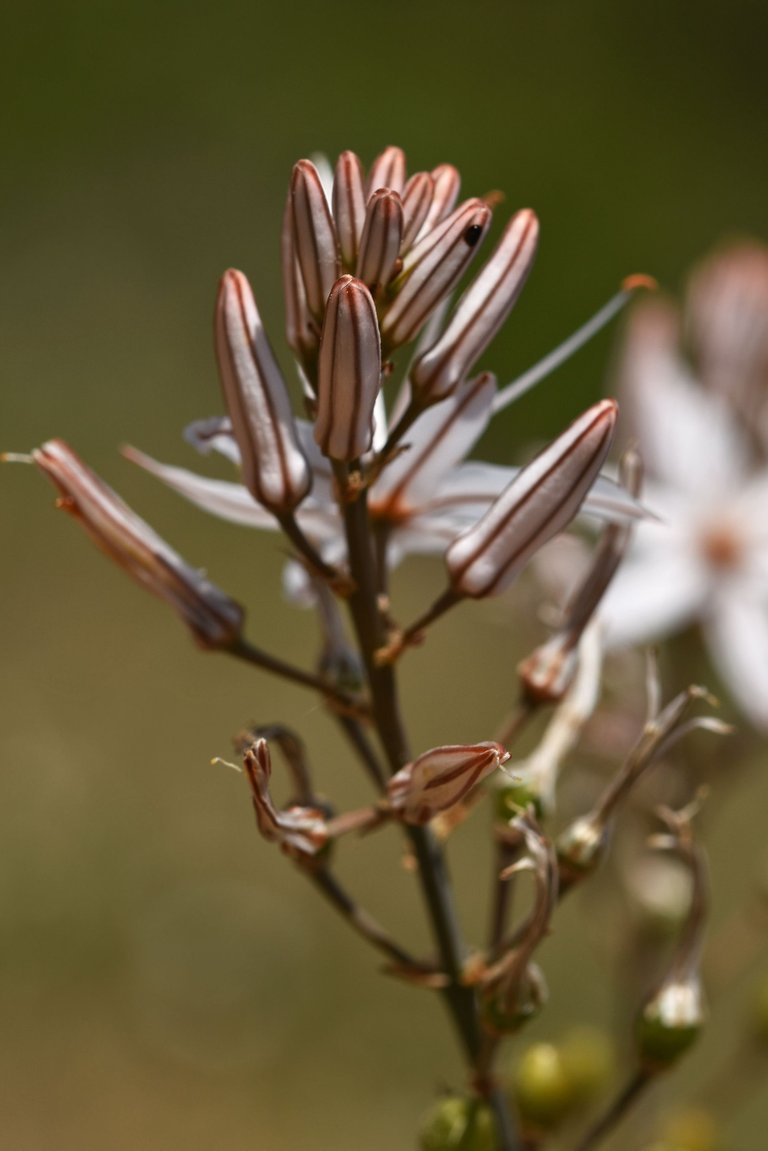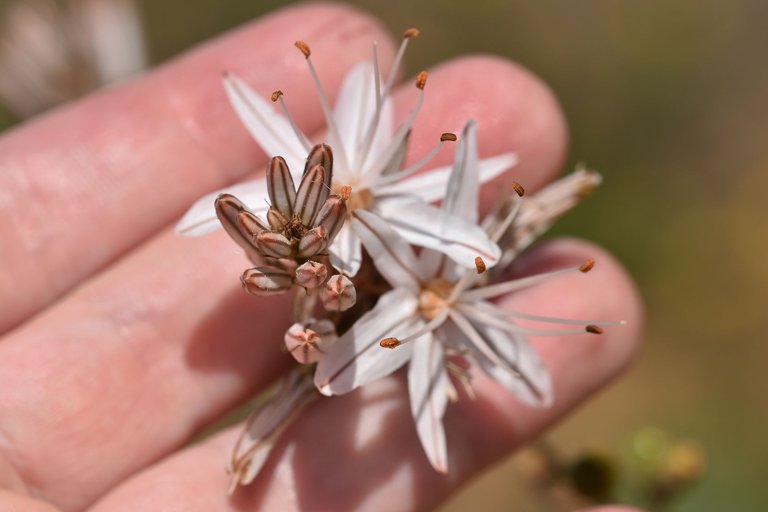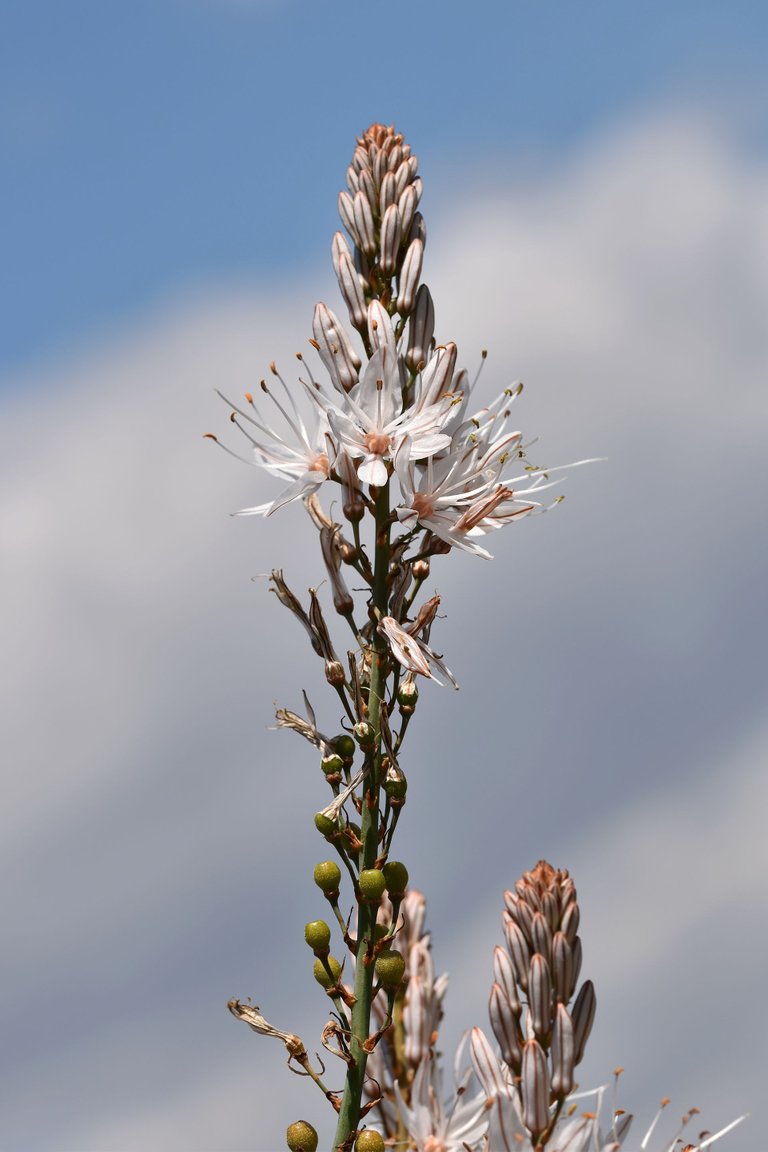
I have been wanting to photograph this gorgeous weed for a very long time! But there was always something wrong. Either way I was too early and there was no flowers yet. Or too late and it was all faded already. Too far and I could wave to them from a car or I had no camera with me so I could just admire them myself.
Finally got it right!
It was hot, it was dusty and it was worth it :)
Asphodelus ramosus

There is a few types of Asphodelus around. Some are very small that look like chives with thin flower stems. I liked them so much that I collected some seeds in the wild and grew them in a pot for a couple of years. They spread like crazy (weed it is) and every year I had to pick some young plants from other pots around. Each stem produces hundreds of seeds and with the wind they just throw them all around.
 |  |
This is a lager type. A much larger type! The flower stems are taller than me and the leaves resemble Iris leaves. Thick and wide grow to a nice, lush bush.
You can also find it under few common names: Silverrod, Branched Asphodel or Small-fruited Asphodel and it will grow in the warmer parts of southern Europe (Mediterranean ), northern Africa, and the Middle East.
 |  |
As I mentioned this one grows pretty big and in uncultivated areas it can be also pretty invasive (I think they all are seeing what they could do in a pot).
They will start to grow as early in the year as January and I very often see them poking from the soil and was wandering what it was. Around February-March the flower stems will start to show from the center of the plant.


Blooding time starts in march and last until the end of May or start of June. The photos I took in mid May and the you can see the the flowers opening almost at the very tips, while lower on the stem seed pods already formed. They have been blooming for a while already and are about to end the season.
The flowers are absolutely adorable. Hundreds of them packed on long stems and each has these thin, brown stripes and long stamens. Beautiful things!


During the hot months the plant will die back completely. The tubers that stay seep underground will survive though and store enough water and nutrient for the plant to wait for month for the next spring.
It also helps the plant to survive the fire season where large area of woods and lawns are burned to the ground. Even if the leaves are gone, the roots will be fine.
 |  |
Each of these little fruits holds dozens of tiny, black seeds. After they mature they will crack open on the sun and spread the seeds. Some will get lucky and will manage to germinate in spring.
 |  |
You can see how tall they are. They rise above all the Gorse bush that grows all around.

Shot with Nikon D5500 + Sigma 105mm lens
All photos and text are my own.

